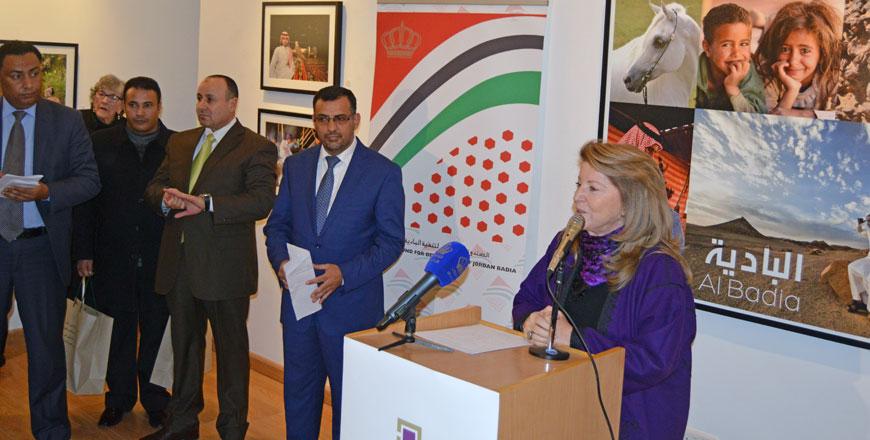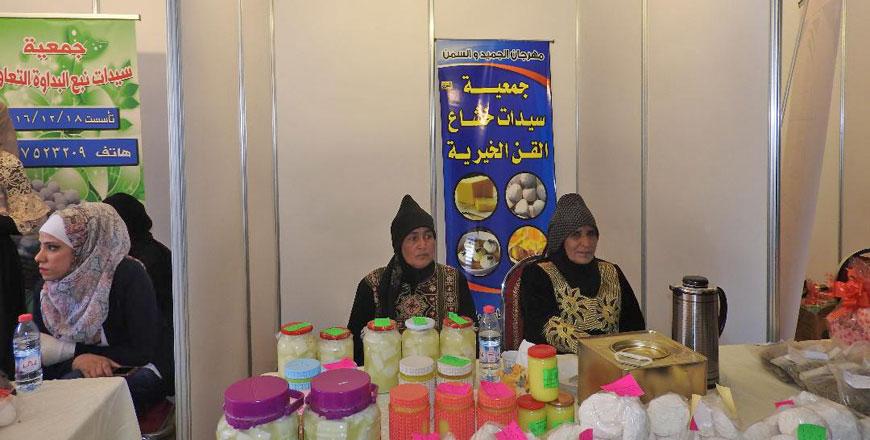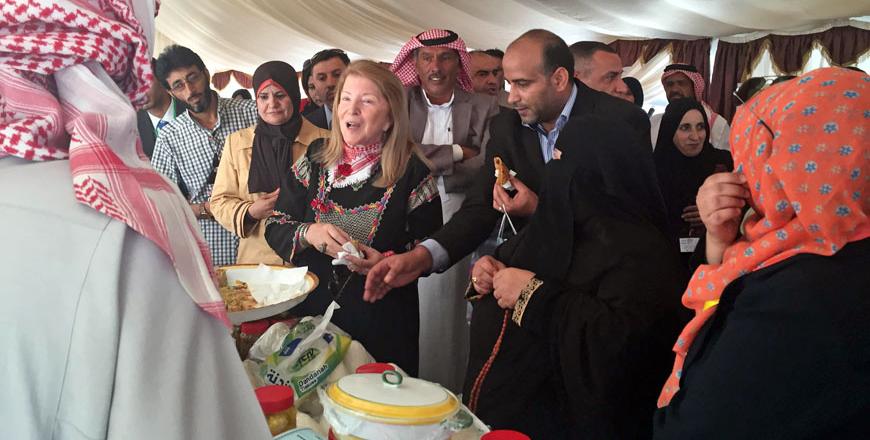You are here
US musician explores bedouin cultural traditions in Northern Badia
By Saeb Rawashdeh - Aug 20,2017 - Last updated at Aug 20,2017

Kathleen Hood films a ‘Bedouin Night’ event in 2011 (Photo courtesy of Kathleen Hood)
AMMAN — “I have long been fascinated by music from the Near and Middle East, and I really enjoy listening to it,” said Kathleen Hood, a cellist with the Long Beach Symphony and director of publications for the Department of Ethnomusicology at the University of California, Los Angeles (UCLA).
Her interest in music eventually pushed her to enrol in the doctoral programme of UCLA’s Department of Ethnomusicology in 1995, where she specialised in Near Eastern music.
“I conducted my dissertation fieldwork in Suwayda, Syria. My dissertation was eventually expanded and published under the title ‘Music in Druze Life: Ritual, Values, and Performance Practice,” Hood told The Jordan Times in a recent e-mail interview.
Because of the proximity of Suwayda to northern Jordan, as well as living in areas where many bedouins live, the Druze in Syria adopted many of the bedouin cultural traditions, including the practice of poet-singers accompanying themselves on the rababa — type of a bowed string instrument — eating mansaf, among others, the American said.
When she learnt that Jordanian researcher Mohammad Al Oun and a group of people were looking for an ethnomusicologist to help them preserve their traditions, Hood found “the perfect project for her”, she said, adding that this was “one of the most fulfilling things” she has ever done.
“We started documenting the performance traditions of the bedouins in the Northern Badia in Jordan, in the summer of 2010,” she said, adding that this included music, dance and poetry.
The project was conducted with funding from the Firebird Foundation for Anthropological Research, a fellowship for the documentation of oral literature and traditional knowledge, Hood highlighted.
It continued during the summer of 2011 with funding from the Arab Fund for Arts and Culture — an organisation that used to be located in Amman, but was later relocated to Beirut — and further funding from the Firebird Foundation, she emphasised.
“For both projects [2010 and 2011], we collaborated with the Jordan Badia Research and Development Centre and with local communities in different parts of the Jordanian Badia, whom we engaged in our project,” Hood said.
Meanwhile, Oun has been working to establish a non-profit organisation that would deal with the “intangible heritage of the bedouins”, hoping that, by October, he will have a house in the badia where the centre will be established, she said.
“The main obstacle to starting the centre is the need for funding,” she underlined.
The scholar said they collected 28 hours of raw video footage, a comparable amount of audio recordings (27 GB worth) and many photographs during the 2010 and 2011 projects.
Another initiative is the upcoming book of Gazua Elaun — co-written with Hood — a Jordanian researcher originally from the Northern part of the Kingdom.
“The book is an homage to Elaun’s grandmother,” said the American expert, noting that “it is an archival document to preserve knowledge about the traditional life of bedouin women in the Northern Badia”.
“In the book, we examine many aspects of the bedouin life related to women. The material is based on extensive interviews with elderly women who still remember how things used to be in the past. The book touches upon music slightly, but is more general in scope,” Hood said.
“One of my dreams is to set up a website that can be a cultural heritage archive centre that anyone can access. We could have a photo gallery, a video gallery, articles and more,” she said.
“I would also like to help out in inscribing one or more of the traditions of the North Badia as intangible cultural heritage with the UNESCO, similarly to what was done with the bedouins of Wadi Rum and Petra,” Hood added.
Related Articles
AMMAN — The Hashemite Fund for Development of Jordan Badia launched a book of photographs this week that showcases the beauty of Jordan’s ba
AMMAN — “Jameed and Ghee Festival”, held on Friday, was more of a mix of preserving culture and enhancing sustainable development rather tha
AMMAN — Marking the Kingdom’s 69th Independence Day, a festival held this weekend celebrated a must-have ingredient of Jordanian cuisine — j

















